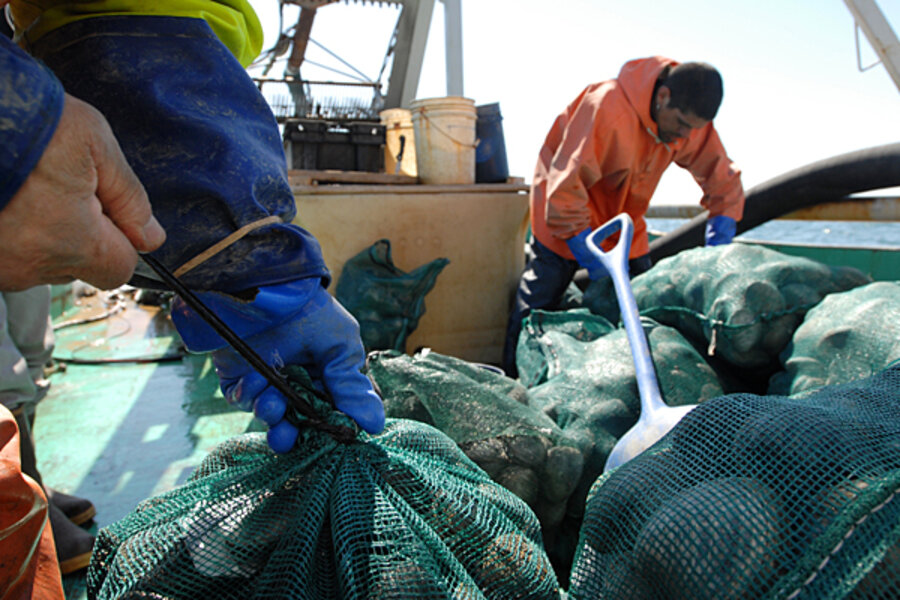How one fisherman is getting produce directly to consumers
Loading...
While local food movements are largely focusing on land-based farming, family fishing operations are also gaining momentum through the rising popularity of community supported fisheries (CSF). Like their more-established siblings, CSAs (Community Supported Agriculture), have more and more consumers interested in buying their products locally direct from fishermen.
Food Tank was thrilled to speak with Shaun Strobel, of Skipper Otto, the first CSF on the West Coast of North America.
Food Tank: What initially inspired you to create Fisher Otto? How has it evolved since then?
Shaun Strobel: Initially, we were aware of the fact that my father, who had never missed a season since the late 1960s, was having trouble actively continuing in the fishery. This seemed rather tragic to us. We thought he should be able to continue fishing until he chose to quit, rather than being forced out.
Secondly, we were inspired by our involvement in a CSA. Getting our produce directly from farmers inspired my wife and got us thinking we could apply the same concept to fishing. It took off from there!
FT: How many CSFs are currently in Canada and the U.S.? Do you envisage this number to grow in the coming years?
SS: The North Atlantic Marine Alliance has reported there are between 35-40 CSFs in North America. However, it remains quite difficult to put an exact number on it, because there are small and localized CSFs that may not have been counted in the statistics.
I envision the current number of CSFs to grow, as there is a strong consumer appetite for the model and enormous interest in local food systems.
FT: What do you feel are the biggest threats confronting global fisheries today?
SS: There are a few problems, but one of the main ones is the way regulation is designed to work for the big fishing corporations. Rules are made to support fewer and larger corporations, who have the ability to invest in very large “mass extraction” boats.
I believe the way the industry is set up to promote large-scale extraction is a recipe for real disaster for our global fisheries.
FT: What were the challenges you faced in setting up the CSF? What difficulties do you encounter in the ongoing operation of your organization?
SS: The farmers in CSAs broke ground for us and sparked interest and trust, but the key challenge in setting up Skipper Otto was trying to come up with a CSF business model and invent something for the first time.
The struggles of running a CSF are more operational in nature, such as dealing with changing regulations and monitoring standards. Day-to-day issues, such as getting ice for our fisherman, transport, and securing custom processing, are also difficult. In addition, there are everyday stresses about our fishing catch as we are forever at the mercy of the environment.
Luckily, we manage to get a lot of help to run the CSF. We have always had volunteers and we have managed to hire some great people with help from grants from organizations like EcoTrust and through Sauder School’s Isis Social Ventures program, which assists in many ways, including coaching, mentoring, and even pro bono legal work.
FT: How do you feel the CSF model promotes sustainable fishing practices? How is it different from globalized seafood supply chains?
SS: Firstly, the CSF simply promotes the continuation of smaller scale fishing. We revere the traditional ways of fishing that do not have the capacity to do massive damage to fisheries and the environment in one big swoop.
Also, we make ourselves accountable to the people that buy our fish. We can look at our customers in the eye and tell them, “This is what I fished, where I fished, and this is how much by catch and birds I may have unfortunately caught in the net.”
We want this to be a sustainable fishing operation for generations to come, for both the fishermen and the public. For example, last year was not a great year for sockeye salmon, but almost a record year for pink salmon. In response, we tried to make it worth the fisherman’s while to fish pink salmon and tried to educate consumers on how to prepare it correctly. This encourages sustainable fishing and consumption.
FT: You say on your website that your CSF creates a direct connection between local fishermen and consumers. How do you feel the “Fisherman to Fork” concept has been received locally?
SS: People are really excited when they come down to the docks to talk to us. We are also working on classes for our members, including workshops on how to cut fish, sushi cutting, and canning and smoking fish.
In regards to the fishermen, there are those that are more cognizant of what we are doing and are really excited by the model and others are just happy to get a fair price for their work. One fisherman told me that he made approximately an additional US$7,000 over a summer season from selling to our CSF rather than big fishing company. This makes a real difference.
FT: What is your vision for the future of Skipper Otto and for the role of CSFs?
SS: My vision is to take hold of our entire supply chain. We are looking to set up a cooperative processing facility to enable 100 percent transparency in the journey of our fish to our members.
On top of everything I have mentioned, I think there is an intrinsic value in keeping more eyes on the ocean. Local fishermen have the know-how and understanding to see changes in the environment, much like smallholder, agricultural farmers!






